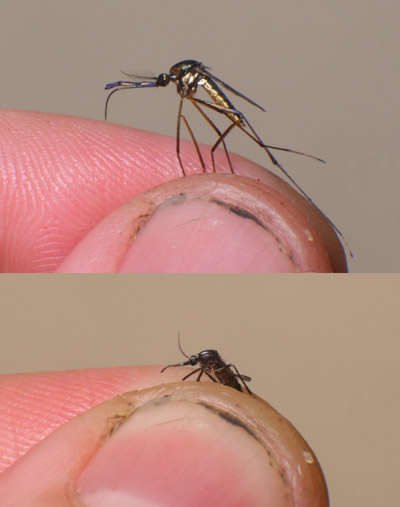 That… is a phrase that should become a new curse. Let’s start the ball rolling.
That… is a phrase that should become a new curse. Let’s start the ball rolling.
While I was working on the car yesterday, The Girlfriend’s Younger Sprog drew my attention to a giant mosquito that was sitting on the windshield, wondering if it was a crane fly. A close examination of the surprisingly cooperative insect lent weight to it being an actual mosquito, albeit a very large species, and capturing it proved surprisingly easy. Less so in photographing it, since this required restraining it within a container and it was reluctant to do many poses on a twig within the mini-aquarium, though I managed a couple with patience. I did eventually gas it with alcohol, having no intention of letting such a monster escape, and captured a ‘normal’ mosquito for comparison and scale. I said I’d been working on the car, so you can stop the muttering about the condition of my thumbnail, thank you very much.
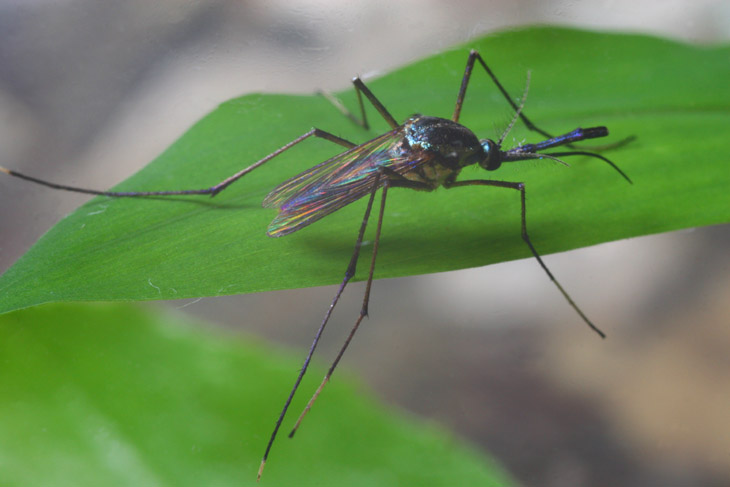
This is an elephant mosquito (Toxorhynchites rutilus,) and after getting over its size, the most noticeable aspect is the iridescent blue and gold coloration. It extends quite far, too, even visible on the proboscis. After a lot of discarded frames, I dropped an alcohol swab in the aquarium and waited a bit, then fished out the stuporous insect for some closer, detailed shots.
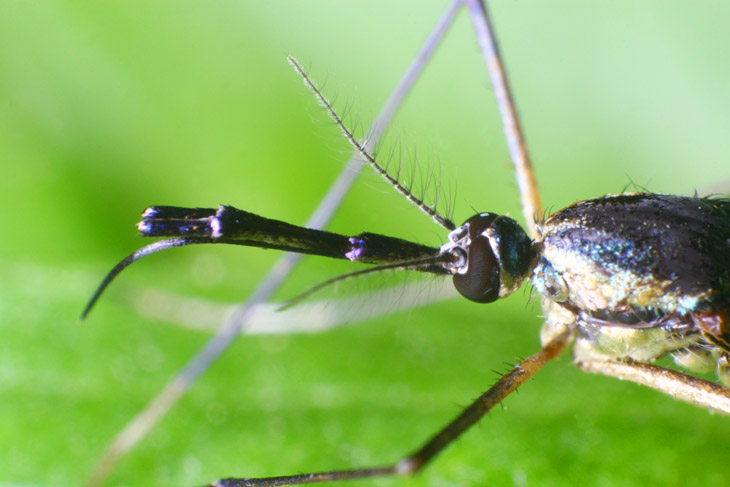
No, you’re not imagining it – it really is sparkly all the way down. Plus you have to appreciate those wraparound eyes. After these photos, I suspended the entire insect in liquid alcohol to preserve it – both The Girlfriend and The Sprog react badly to mosquito bites, so releasing it would have earned me the ire of them both, plus we don’t need no more steenkin’ mosquitoes around here, especially one that looks like it could drill through Tuffskins, plus I wanted to save it for posterity anyway. However, after it had been pickled I looked it up to see exactly what species it was, and discovered that I should have let it go – elephant mosquitoes drink from flowers and are not parasitic (thus no bities,) but their larvae will actually eat the normal pain-in-the-ass species of mosquitoes and they’re currently in use as a natural control for those. Now I feel bad.
When I finished the detail shots I went out to find a typical mosquito for a comparison, which proved harder than it should’ve – we’d just had a downpour and it not only made them scarce, it seems to have disturbed nearly all of them from the undersides of the leaves where they typically roost. You know the drill – always around until you need one. As the image at top attests, I did finally manage to find one (actually two, but I fumbled the first and lost it,) but in the process I spotted a familiar insect within the decorative pond that is still under construction.
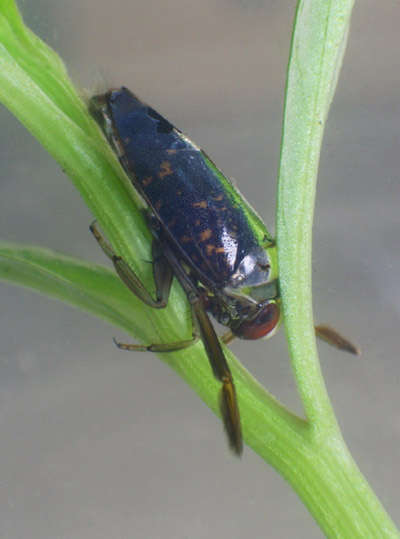 This is a backswimmer, genus Notonecta, possibly Notonecta kirbyi. Even as adults they’re aquatic, swimming around in jerky motions chasing down things like mosquito larvae. Many years ago as a child, I found out that they can be provoked to bite and it’s surprisingly sharp – no venom, but you’ll know it when it happens – and it was enough to convince me to use care when handling the true bugs with their piercing mouthparts.
This is a backswimmer, genus Notonecta, possibly Notonecta kirbyi. Even as adults they’re aquatic, swimming around in jerky motions chasing down things like mosquito larvae. Many years ago as a child, I found out that they can be provoked to bite and it’s surprisingly sharp – no venom, but you’ll know it when it happens – and it was enough to convince me to use care when handling the true bugs with their piercing mouthparts.
[By the way, that’s not a true aquatic plant, but a plain ol’ terrestrial one stuck in there to provide a perch.]
The sheen you’re seeing is air adhering to its body, often seen on the belly too and usually providing a silvery appearance. While they can probably breathe this, they also have a snorkel-like opening in the abdomen which we’ll see shortly. They run roughly 10mm in body length, a little more in leg spread, and are most noticeable because those hind legs are usually seen splayed out like oars.

Since they hunt aquatic prey, they are usually upside-down when seen at or near the surface, gathering air through their butt while keeping an eye on the happenings below – this is shot looking straight down into the water. Anatomically and behaviorally, they’re similar to the giant water bugs, genus Belostoma, but only distantly related.
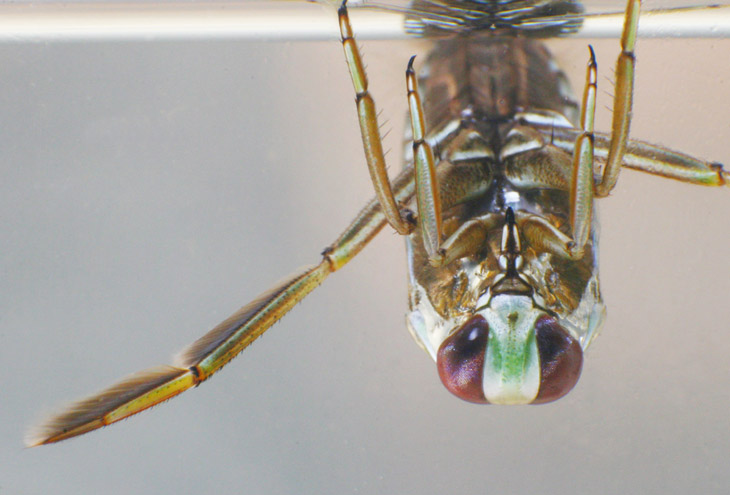
I have to admit I like this portrait, looking faintly surreal due to the adhering air changing the contrast, but it also shows off the hairs along its legs, angled so that they spread out on the ‘downstroke’ and flatten when the legs move in the opposite direction, making one-way oars that allow the bug to swim strongly. The proboscis is visible extending from the ‘chin’ down, or up in this case, to a spot between the forelegs. And there’s the faint hint of the reflection from the surface visible just above the abdomen. Really, I’m trying to figure out why this isn’t a Marvel superhero. And if you haven’t made a macro aquarium yet, you should.
At the same time, I also found another true bug and brought it along for a quick photo session while all the equipment was handy.
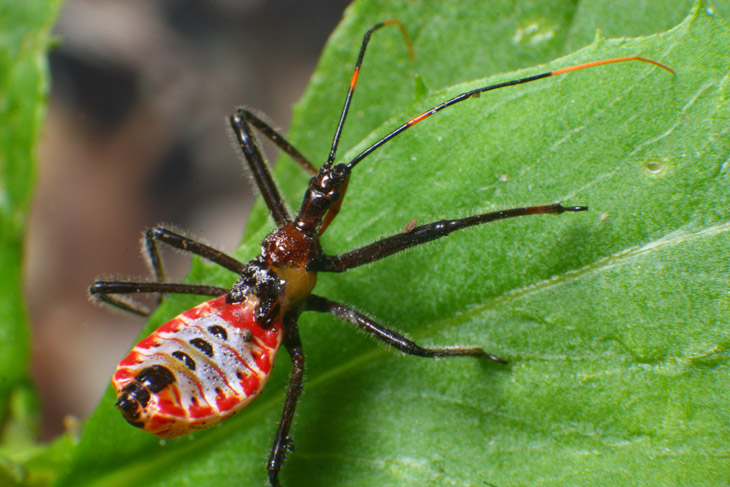
This is the nymph form of a wheel bug, a type of assassin bug that can be seen as an adult (many, many times bigger) here – as a bit of trivia, both images are using the same background print. This one is about the same body length as the backswimmer, but much more cooperative in posing. Given that, I still took too many frames trying for tight focus that showed the facets of the eyes, because they really weren’t visible in the viewfinder and the focal distance was different from anything that I could see clearly.
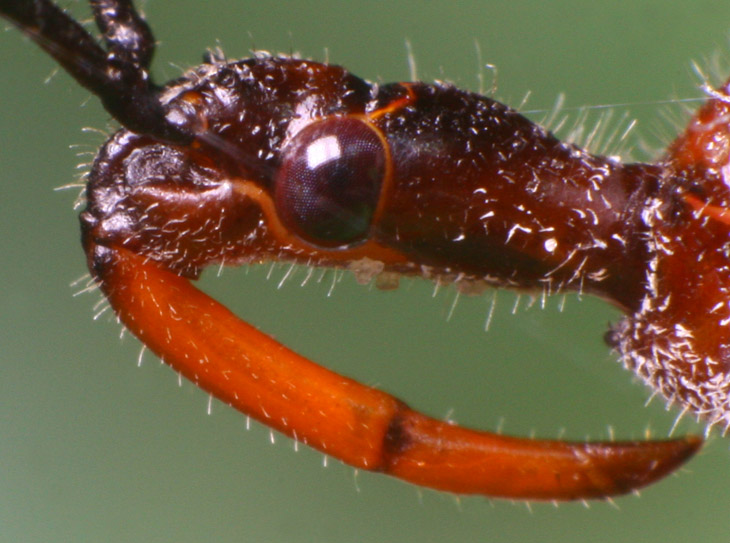
Given that the proboscis spanning across this frame is probably less than 2mm long, it’s safe to say this a fair amount of magnification – the two spider web strands came along for the ride, and you can see how far out of focus the one in front of the eye ended up. This is admittedly a tight crop but still about half of the native resolution. Assassin bugs tend to be slow and deliberate movers, making them fairly easy to work with – much better than mosquitoes and hyperactive swimming bugs, certainly. Even as they try to turn away from the looming camera rig, it’s not hard to shift and maintain a preferred angle, but it always helps to perch them on something that can be turned easily too.
There’s something else I want to mention. I was composing this post in my head as I was obtaining these images, and ended up going out twice to reshoot perspectives that would better illustrate the post. Especially when you’re doing ‘studio’ macro work, it never hurts to hang onto your photo subjects until you’re sure you got what you need – enough angles, or the details of some particular facet, whatever. It’s much worse when shooting on spec for potential publication, especially because you have no idea what a publisher is hoping to illustrate, so take lots of frames. And finally, it never hurts to be paying close attention to the habits and patterns of the various species, so you have a much better chance of finding them again if and when you need more photos. The wheel bug nymph seen here, for instance, can only be found at this age for a short while, born in the late spring or early summer and reaching sexual maturity in a few weeks, so this coloration and size will naturally change. Think ahead.




















































